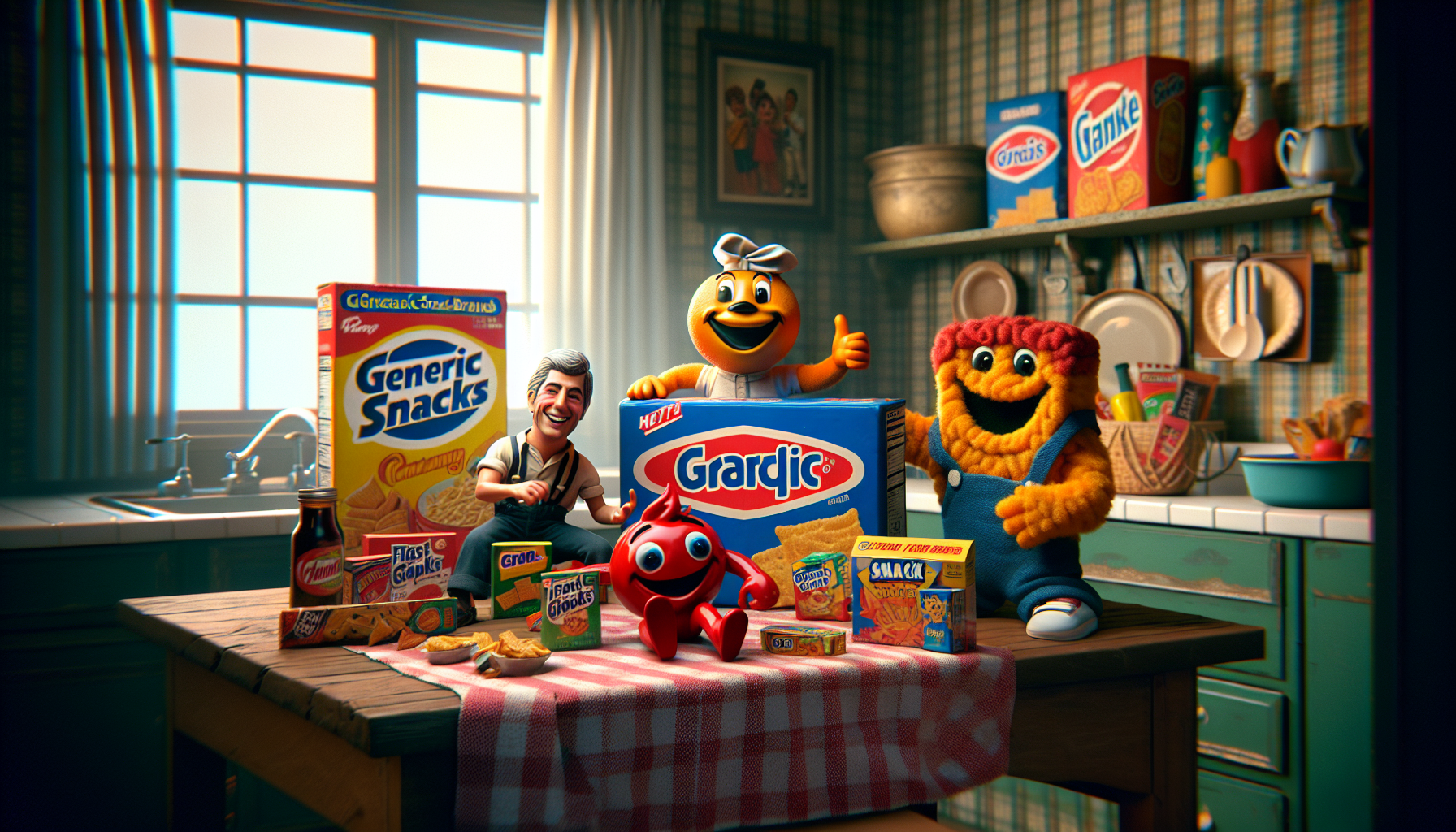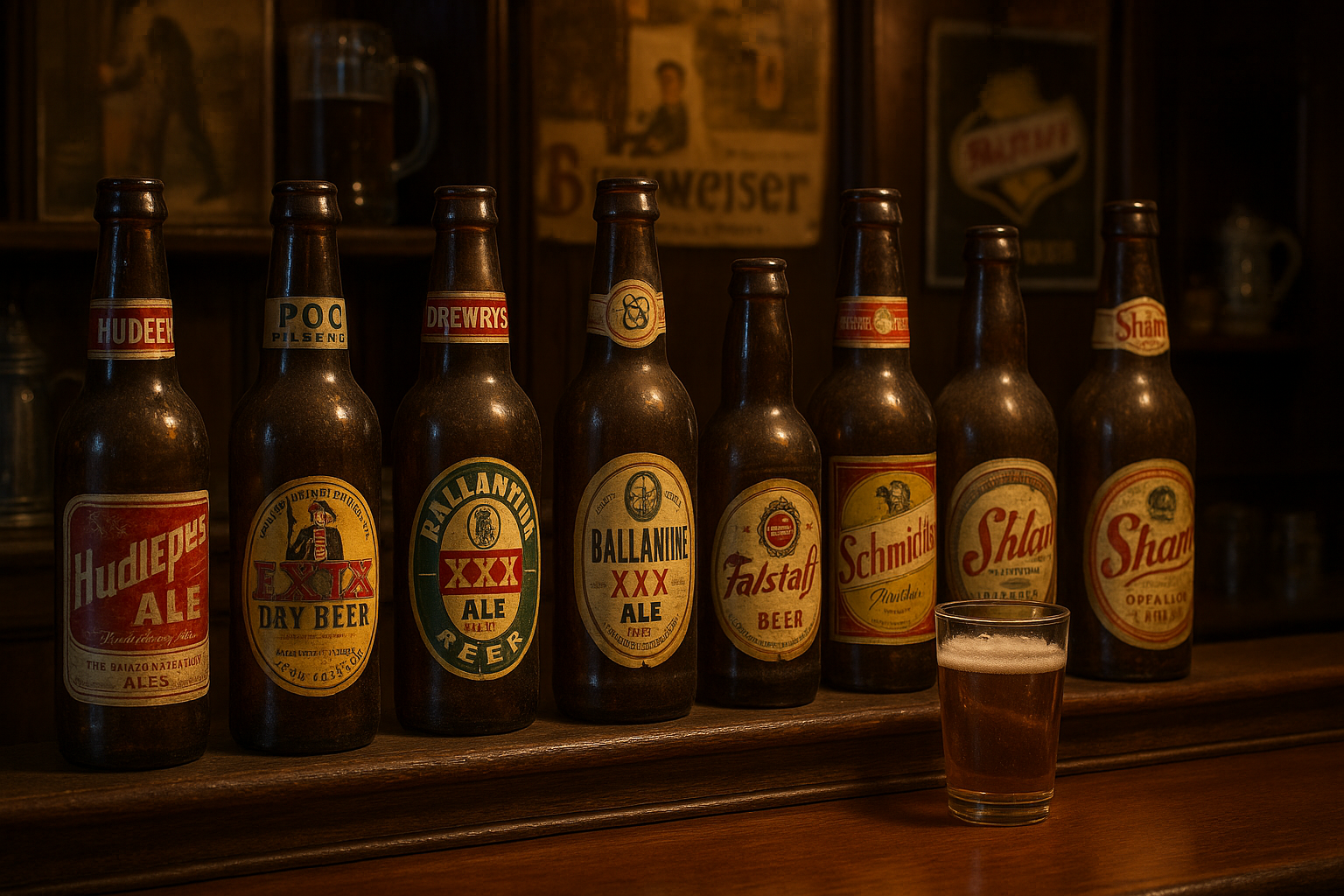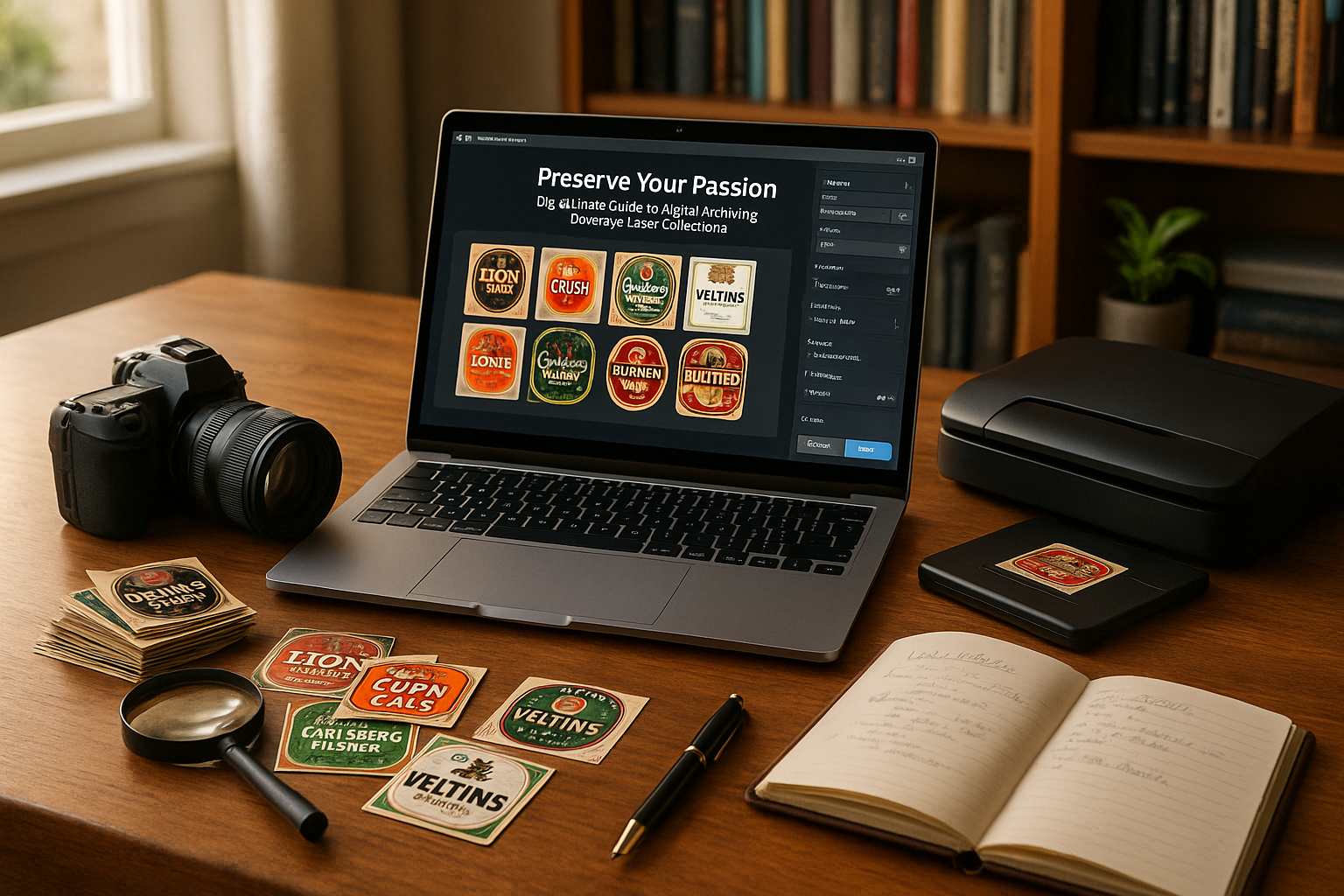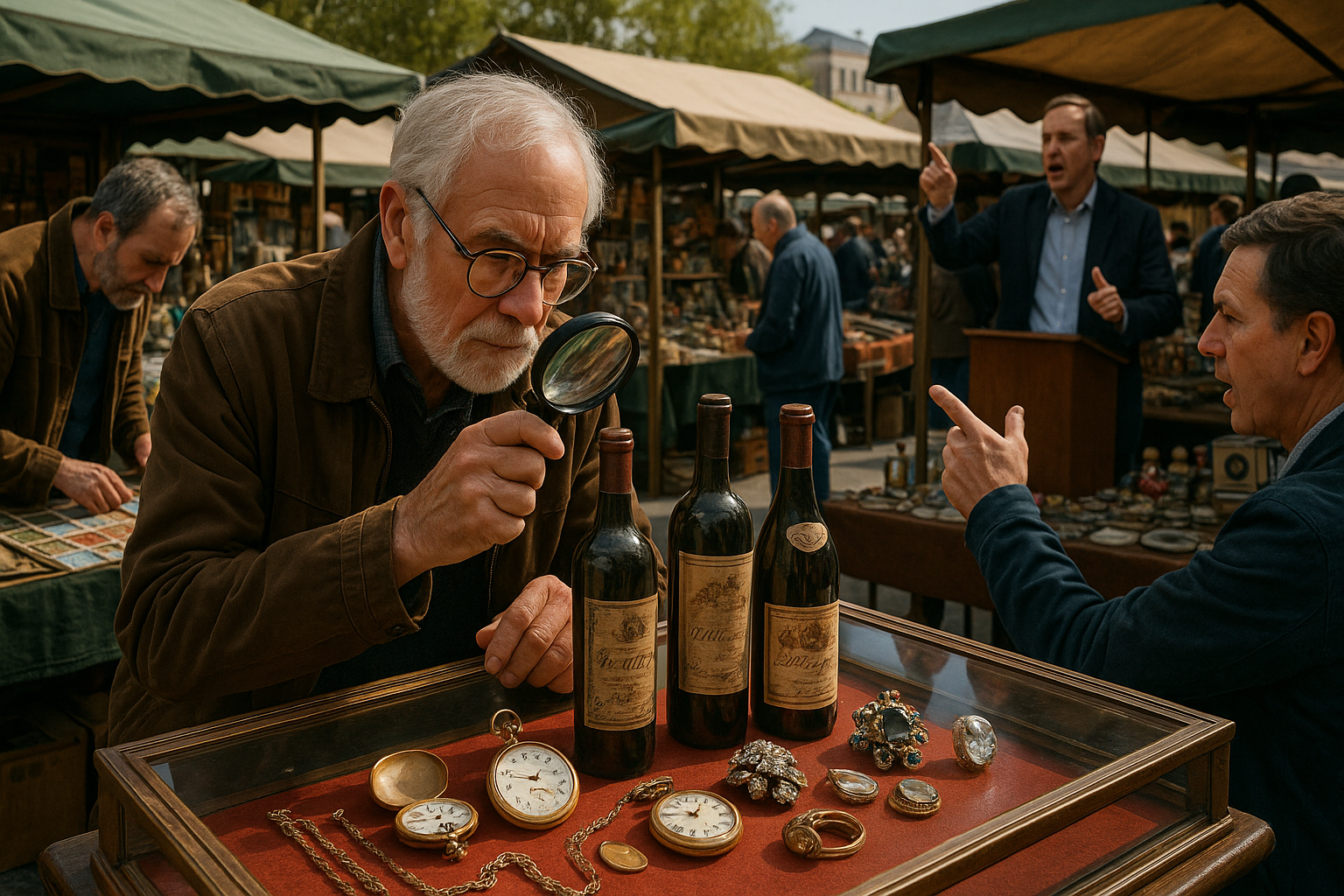In a world where trends come and go at lightning speed, there’s something undeniably comforting about the nostalgia of our childhood memories, especially when it comes to those beloved snack brands and their iconic mascots. These characters didn’t just sell products; they became a cherished part of our everyday lives, weaving themselves into the fabric of our culture and etching themselves into our hearts. Welcome to “Meet the Icons: Early Snack Brands and Their Beloved Mascots,” a journey back in time to revisit the characters who didn’t just fill our snack cabinets, but also filled our imaginations. 🍪✨
Imagine opening your lunchbox to find a packet of your favorite cookies, the packaging adorned with a familiar face that always seemed to be winking at you as if to say, “Let’s have some fun!” These mascots were more than just marketing tools; they were storytellers, each with their own unique personality and backstory, designed to capture the hearts and minds of children and adults alike. From Tony the Tiger’s exuberant “They’re Grrrreat!” to the enigmatic charm of the Pillsbury Doughboy’s giggle, these characters were as much a part of the product as the snacks themselves. They became symbols of joy, excitement, and a sense of belonging, creating a community of fans who eagerly awaited their next adventure.
In this exploration, we’ll dive deep into the origins of some of the most memorable snack mascots, uncovering the creative processes that brought them to life and the cultural impact they had over the decades. We’ll examine how these characters evolved alongside their brands, adapting to changing times while retaining the core elements that made them so lovable. From television commercials that became part of our Saturday morning rituals to the clever marketing campaigns that ensured their place in pop culture history, we’ll reveal the secrets behind their enduring appeal. Moreover, we’ll discuss how these mascots have managed to stay relevant, even as new generations of consumers discover them for the first time.
Join us as we journey through time, revisiting the playful world of snack mascots that have left an indelible mark on our hearts and taste buds. We’ll share stories of creative genius, explore the emotional connections these characters forged with their audiences, and celebrate the timeless joy they continue to bring to snack lovers around the globe. Whether you’re a lifelong fan or a curious newcomer, this nostalgic look back will remind you of the power of imagination and the simple pleasures of life’s little indulgences. So grab your favorite snack, settle in, and let’s rediscover the characters who made snack time a magical experience. 🥨📺
The Rise of Snack Brands in the Early 20th Century
The early 20th century marked a significant transformation in the food industry, particularly with the emergence of snack brands that would go on to become household names. The industrial revolution had paved the way for mass production, and with it came an era of convenience foods that were both accessible and affordable to the general public. These brands were not just selling food; they were selling experiences, often personified by their charismatic mascots. The marriage between product and mascot became a powerful marketing tool, creating an emotional bond with consumers and fostering brand loyalty.
As cities expanded and life became more fast-paced, the demand for quick, tasty snacks grew exponentially. Companies quickly seized the opportunity to fill this void by introducing a variety of snack foods that catered to different tastes and preferences. The packaging, marketing, and branding became as important as the product itself. This era saw the birth of iconic characters that have stood the test of time, such as Tony the Tiger and the Kool-Aid Man. These mascots were not mere advertisements; they became a part of popular culture, leaving an indelible mark on the consumer psyche.
One of the key strategies employed by these brands was the use of eye-catching packaging and memorable jingles that would capture the attention of both children and adults. The idea was to create an experience around the product that was both enjoyable and memorable. Mascots played a critical role in this strategy, serving as the face of the brand and often embodying the qualities that the brand wanted to convey. Whether it was the energy and enthusiasm of the Trix Rabbit or the comforting presence of the Pillsbury Doughboy, these characters helped to humanize the brands and make them more relatable to consumers.
Marketing Strategies That Stood the Test of Time
The success of these early snack brands can be attributed in large part to their innovative marketing strategies, which included the clever use of mascots. These characters were designed to appeal to specific demographics, often targeting children and families with their friendly and approachable personas. The mascots became the faces of their respective brands, and their stories were woven into the fabric of the product’s identity.
For instance, Kellogg’s introduced Tony the Tiger in 1952 as a way to market their Frosted Flakes cereal. Tony’s catchphrase, “They’re Gr-r-reat!”, quickly became synonymous with the brand, and his image was prominently featured in all advertising materials. This strategy not only increased brand recognition but also created a sense of trust and familiarity among consumers. Similarly, the Kool-Aid Man, known for his dramatic entrance through walls and his enthusiastic shout of “Oh yeah!”, became an instant hit with children and added a playful, energetic element to the brand.
Another important aspect of these marketing campaigns was the focus on storytelling. Brands used their mascots to create engaging narratives that would capture the imagination of their audience. These stories often highlighted the unique qualities of the product, while also reinforcing the brand’s core values. By creating a narrative around their products, brands were able to foster a deeper emotional connection with consumers, turning a simple snack into a beloved staple of everyday life.
Iconic Mascots and Their Lasting Impact
The mascots introduced by early snack brands have had a lasting impact on both the industry and popular culture. These characters have become symbols of nostalgia, evoking memories of childhood and simpler times. They have also played a crucial role in the enduring success of their respective brands, helping to maintain relevance in an ever-evolving market.
One of the most recognizable mascots is the Pillsbury Doughboy, introduced in 1965. Known for his giggle and his soft, doughy appearance, the Doughboy became an instant favorite among consumers. His friendly demeanor and playful antics helped to humanize the brand, making it more approachable and relatable. The Doughboy’s popularity has endured over the years, and he continues to be a central figure in Pillsbury’s marketing campaigns.
Another iconic mascot is the Quaker Oats Man, whose image has graced the brand’s packaging since the late 1800s. While not as animated as other mascots, the Quaker Oats Man conveys a sense of tradition and trustworthiness, qualities that have been integral to the brand’s identity. His presence on the packaging serves as a reminder of the brand’s long-standing commitment to quality and nutrition.
| Brand | Mascot | Introduction Year | Key Characteristics |
|---|---|---|---|
| Kellogg’s Frosted Flakes | Tony the Tiger | 1952 | Energetic, Enthusiastic, Trustworthy |
| Kool-Aid | Kool-Aid Man | 1974 | Playful, Energetic, Iconic |
| Pillsbury | Pillsbury Doughboy | 1965 | Friendly, Playful, Approachable |
| Quaker Oats | Quaker Oats Man | Late 1800s | Traditional, Trustworthy, Timeless |
In addition to their impact on the brands they represent, these mascots have also become cultural icons in their own right. They have been featured in countless advertisements, television shows, and even movies, further cementing their place in popular culture. Their enduring appeal is a testament to the power of effective branding and the ability of these characters to transcend generations.
Lessons Learned from Early Snack Brand Mascots
As we look back on the history of early snack brand mascots, there are several key lessons that modern marketers can learn from their success. First and foremost is the importance of creating a strong emotional connection with consumers. By using mascots to humanize their brands, companies were able to forge a bond with their audience that went beyond the product itself. This emotional connection is what has allowed these brands to maintain their relevance over the years.
Another important lesson is the value of storytelling in marketing. By creating engaging narratives around their mascots, brands were able to capture the imagination of their audience and create a sense of loyalty and trust. These stories not only highlighted the unique qualities of the product but also reinforced the brand’s core values, making them more relatable and memorable to consumers.
Finally, the success of early snack brand mascots underscores the importance of adaptability and evolution. While these characters have remained largely consistent over the years, they have also evolved to reflect changing consumer preferences and cultural trends. This ability to adapt while staying true to the brand’s core identity has been key to their enduring success and relevance.
- Create an emotional connection with consumers through relatable mascots.
- Utilize storytelling to reinforce brand values and highlight product qualities.
- Adapt and evolve to stay relevant in a changing market.
The Nostalgia Factor and Its Influence on Modern Marketing
Nostalgia is a powerful tool in marketing, and early snack brand mascots have leveraged this to great effect. These characters have become symbols of simpler times, evoking memories of childhood and family gatherings. This nostalgia factor has been instrumental in maintaining the enduring appeal of these brands, even as new competitors have entered the market.
Many brands have capitalized on this nostalgia by reintroducing classic mascots and packaging designs in their marketing campaigns. This strategy not only taps into the emotional connection that consumers have with these characters but also reinforces the brand’s heritage and authenticity. By reminding consumers of their fond memories associated with the brand, companies are able to strengthen their brand loyalty and drive sales.
The influence of nostalgia can also be seen in the rise of retro marketing campaigns, which have become increasingly popular in recent years. These campaigns often feature throwback designs and classic advertising styles, appealing to consumers’ sense of nostalgia and creating a sense of familiarity and comfort. This approach has proven to be highly effective, particularly among millennials and Gen Z, who are drawn to the authenticity and charm of retro branding.
For an in-depth exploration of the nostalgia factor in marketing, watch this video by Marketing360: The Power of Nostalgia in Marketing – Marketing360.
The Role of Technology in Preserving Iconic Mascots
Technology has played a crucial role in preserving and revitalizing iconic mascots for modern audiences. With the advent of digital media and social platforms, brands have been able to reach a wider audience and engage with consumers in new and innovative ways. This has allowed them to keep their mascots relevant and appealing to younger generations.
One example of this is the use of social media to create interactive campaigns featuring beloved mascots. Brands have used platforms like Instagram and TikTok to share engaging content and encourage user-generated content, allowing consumers to interact with their favorite characters in real-time. This approach not only keeps the mascots top-of-mind for consumers but also creates a sense of community and shared experience.
Additionally, advancements in animation and CGI technology have allowed brands to bring their mascots to life in new and exciting ways. Whether it’s through commercials, video games, or virtual reality experiences, these technologies have provided brands with new opportunities to showcase their mascots and engage with their audience on a deeper level.

Conclusion
Reflecting on the rich tapestry of snack history, “Meet the Icons: Early Snack Brands and Their Beloved Mascots” takes us on a journey through time, revisiting the endearing characters that not only represented popular snack brands but also became ingrained in our collective memories. This exploration showcases the creative genius behind these mascots and their powerful role in shaping brand identities and consumer loyalty.
Throughout the article, we delved into the origins of some of the most iconic snack brands and their beloved mascots. From the mischievous antics of the Trix Rabbit to the heartwarming adventures of Tony the Tiger, these characters have not only captured our imaginations but also played a crucial role in the marketing strategies of their respective brands. Each mascot serves as a storyteller, weaving narratives that resonate with consumers and enhance brand recall. For instance, the Pillsbury Doughboy’s infectious giggle has been a symbol of warmth and comfort, inviting consumers into the world of home baking.
Furthermore, the article highlighted the evolution of these mascots, adapting to changing cultural norms and technological advancements. In the digital age, these characters have transcended traditional media, finding new life on social media platforms and in digital marketing campaigns. The adaptability of mascots like Chester Cheetah, who transitioned from television ads to engaging social media content, exemplifies how brands can leverage nostalgia while staying relevant to contemporary audiences.
The enduring appeal of these mascots can be attributed to their ability to evoke emotions and create a sense of nostalgia. This emotional connection not only fosters brand loyalty but also serves as a testament to the timeless nature of these characters. As we reminisce about childhood favorites, we are reminded of the joy and comfort these snacks brought us, underscoring the powerful impact of effective brand storytelling.
In examining the legacy of these early snack brands and their mascots, it becomes evident that they have done more than just sell products; they have woven themselves into the fabric of popular culture. The cultural impact of characters like the Kool-Aid Man, with his iconic “Oh yeah!” catchphrase, demonstrates how these mascots have transcended their original purpose, becoming symbols of fun and spontaneity.
As we look to the future, the article encourages brands to continue embracing the power of mascots in building meaningful connections with consumers. While the marketing landscape continues to evolve, the fundamental principles of storytelling and emotional engagement remain constant. Brands that successfully integrate these elements into their strategies will likely continue to thrive.
In closing, the nostalgic look back at these beloved snack mascots serves as a reminder of the power of creativity and storytelling in branding. It inspires us to appreciate the artistry involved in crafting characters that not only sell products but also bring joy and evoke cherished memories. As you reflect on your own experiences with these iconic mascots, consider the ways in which they have influenced your perceptions and choices. We invite you to share your favorite mascot memories in the comments below and engage in a discussion about the timeless appeal of these characters. 😊
Moreover, feel free to share this article with friends and family who may also have fond memories of these snack icons. By spreading the nostalgia and joy these mascots bring, we can ensure that their legacy continues to delight future generations. For further reading and exploration of this topic, you can visit reputable sources like the Advertising Archives and Brand Mascots: A History. These resources offer deeper insights into the history and evolution of brand mascots.
Thank you for joining us on this delightful journey through snack history. We hope it has inspired you to appreciate the characters that have shaped our cultural landscape and encouraged you to apply the lessons of creativity and emotional engagement in your own endeavors. Here’s to the mascots that have stolen our hearts and to the new ones yet to come! 🌟
Toni Santos is a visual poet and botanical dreamweaver, archiving the ephemeral beauty of dreams through nature’s delicate language.
In his artistic universe, every petal, vine, and root becomes a memory—an echo from the subconscious—preserved in time like pages from an ethereal journal. Toni treats plants not just as living beings, but as dream-symbols: vessels of forgotten feelings, silent wishes, and secret stories waiting to unfold.
His work is rooted in the belief that nature holds the vocabulary of dreams. Through botanical compositions, symbolic floral creations, and enchanted visual studies, he gives form to the unseen — the moment between sleep and wakefulness, where memory fades and imagination begins.
As the visionary behind Vizovex, Toni curates collections that feel like fragments of a dreamscape: moss-filled glass jars, mythic flowers, ancient botanical symbols reimagined. These creations invite you to explore your inner worlds and reawaken your sense of wonder.
His work is a tribute to:
The dreamlike language of plants and natural symbols.
The quiet messages found in forgotten moments.
The art of recording the soul’s memories in organic form.
Whether you’re a seeker of meaning, a lover of myth, or someone who drifts between the symbolic and the real, Toni welcomes you to explore an archive of dreams — one petal, one relic, one timeless whisper at a time





